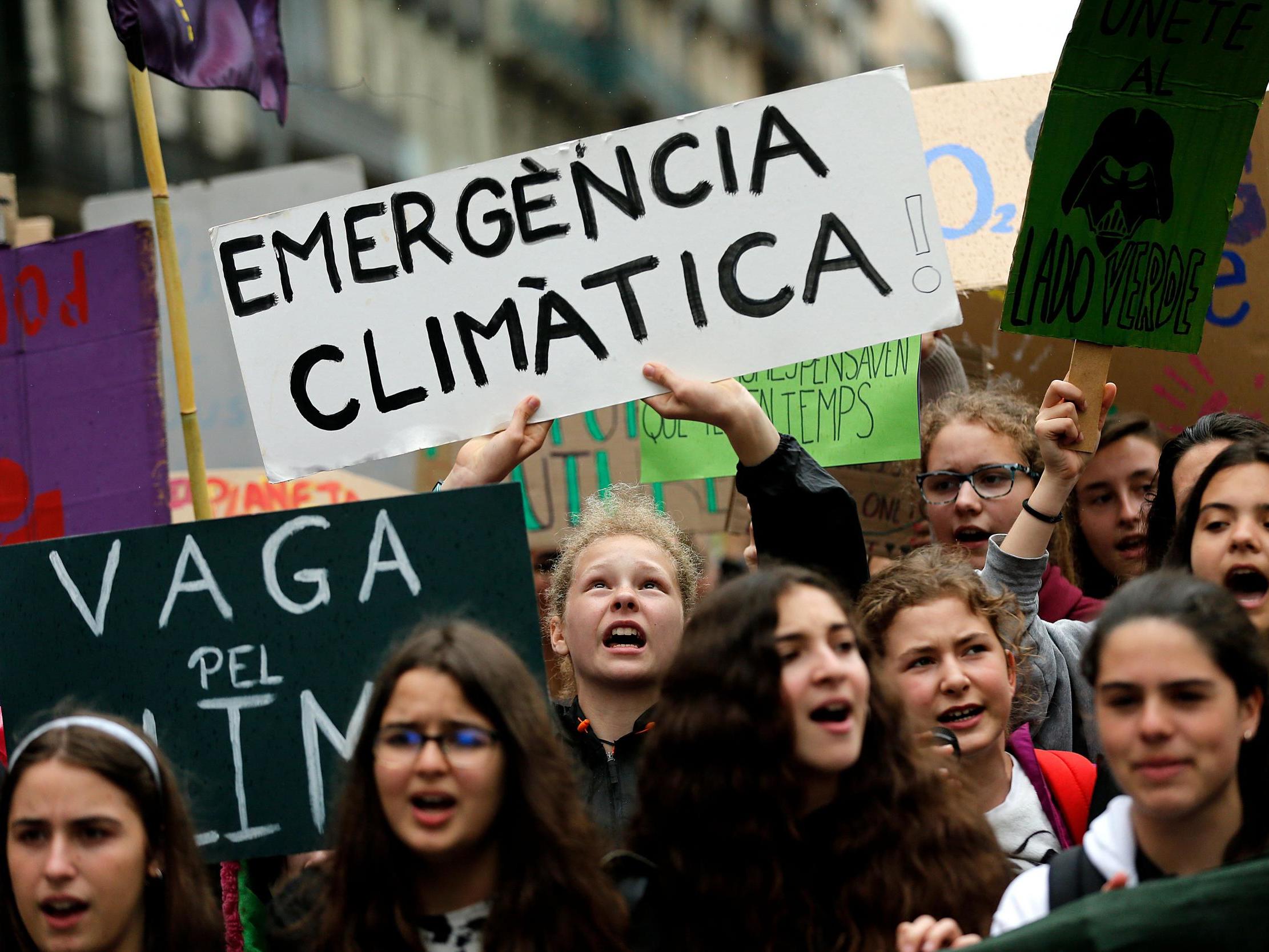‘This is not a drill’: Barcelona declares climate emergency
Mayor calls for ‘paradigm shift’ to new green economic model rooted in justice and sustainability

Your support helps us to tell the story
From reproductive rights to climate change to Big Tech, The Independent is on the ground when the story is developing. Whether it's investigating the financials of Elon Musk's pro-Trump PAC or producing our latest documentary, 'The A Word', which shines a light on the American women fighting for reproductive rights, we know how important it is to parse out the facts from the messaging.
At such a critical moment in US history, we need reporters on the ground. Your donation allows us to keep sending journalists to speak to both sides of the story.
The Independent is trusted by Americans across the entire political spectrum. And unlike many other quality news outlets, we choose not to lock Americans out of our reporting and analysis with paywalls. We believe quality journalism should be available to everyone, paid for by those who can afford it.
Your support makes all the difference.The city of Barcelona has declared a “climate emergency”, setting a new target to cut its greenhouse gas emissions by 50 per cent by 2030 through more than 100 main measures that will also help residents adapt to the impacts of a warming planet.
Mayor Ada Colau said the public awareness campaign accompanying the new strategy drew on the words of Swedish teen activist Greta Thunberg with its slogan: “This is not a drill”.
Spain's second largest city, capital of the northeastern region of Catalonia, said last July it would declare a climate emergency at the start of 2020 only after consulting with citizens on how to act effectively in response.
“We wanted it not to be a rhetorical statement, but a document containing measures that mark a before and after,” Mayor Colau said at a launch event on Wednesday evening.
In the past few months, about 300 people representing 200 organisations took part in discussions to hammer out ways of making life greener, safer and healthier in Barcelona.
City officials emphasised the municipal government could not meet the emissions reductions target through its efforts alone.
Doing so would require cooperation by all, from individual residents to multinational corporations and operators of key infrastructure including the port and airport, they said.
Mayor Colau called for a “paradigm shift” to a new green economic model rooted in justice and sustainability for the sake of future generations.
To reduce Barcelona's emissions by half in a decade from 1992 levels, the city hall plans to invest €563 million euros (£480m), which it hopes will spur additional investment.
The actions the city will fund include reducing the number of private cars on its roads, improving the energy efficiency of residential buildings, producing more renewable energy, and increasing door-to-door waste collection and recycling.

At the start of this year, it introduced a “Low Emissions Zone” across 95 square km (37 square miles), keeping out the most-polluting vehicles in a bid to improve the city's poor air quality.
Officials also said they wanted to start discussions with Barcelona's port and airport about curbing their environmental impact, saying emissions from related voyages and flights were up to four times those produced by all the city's activities.
Janet Sanz, deputy mayor in charge of ecology and transport, said the aim was to promote clean electricity as the port's main source of power and to persuade the airport to cut short-haul flights that could be substituted by affordable train journeys.
But the port authority criticised the city's emissions figures as far too high, saying it included the international journeys of all the ferries, cargo ships and cruise liners that stopped in Barcelona even once in a year.
Pep Canadell, a Catalan climate scientist who heads the Global Carbon Project, said it was important to show leadership on scrubbing out carbon emissions, as Barcelona was doing.
“It can't be done from a top-down perspective only - but that can facilitate it tremendously,” he told The Thomson Reuters Foundation from Australia. At the neighbourhood level, the city plans to pedestrianise more areas, including around 200 schools, and enlarge public green space by 40 hectares, as well as designating 100 municipal facilities as “climate shelters” when heatwaves or floods hit.
In a dense, polluted city like Barcelona, the key was to make it a more liveable place by expanding the use of public transport and returning the streets to citizens, said Mr Canadell.
“People can then see the benefits themselves and want to make changes,” he added.
Thomson Reuters Foundation
Join our commenting forum
Join thought-provoking conversations, follow other Independent readers and see their replies
Comments